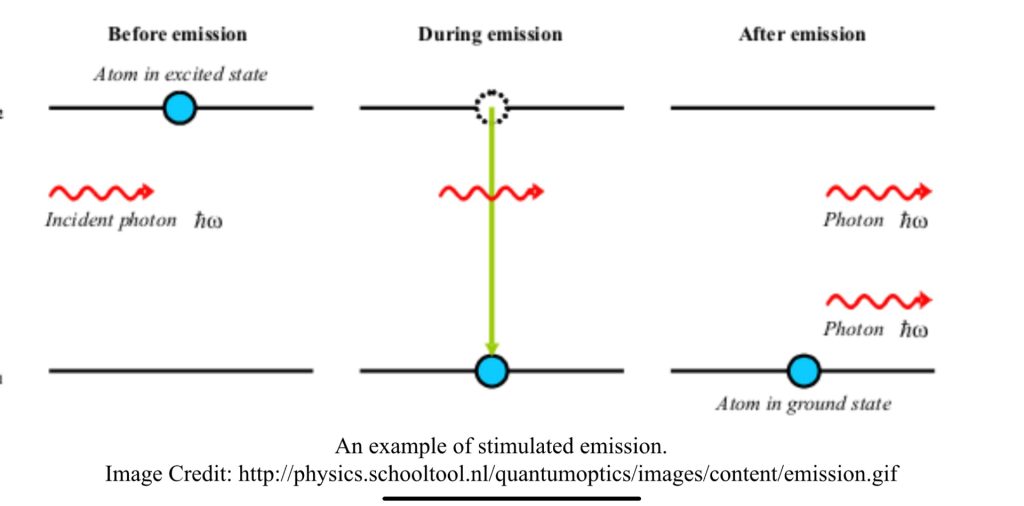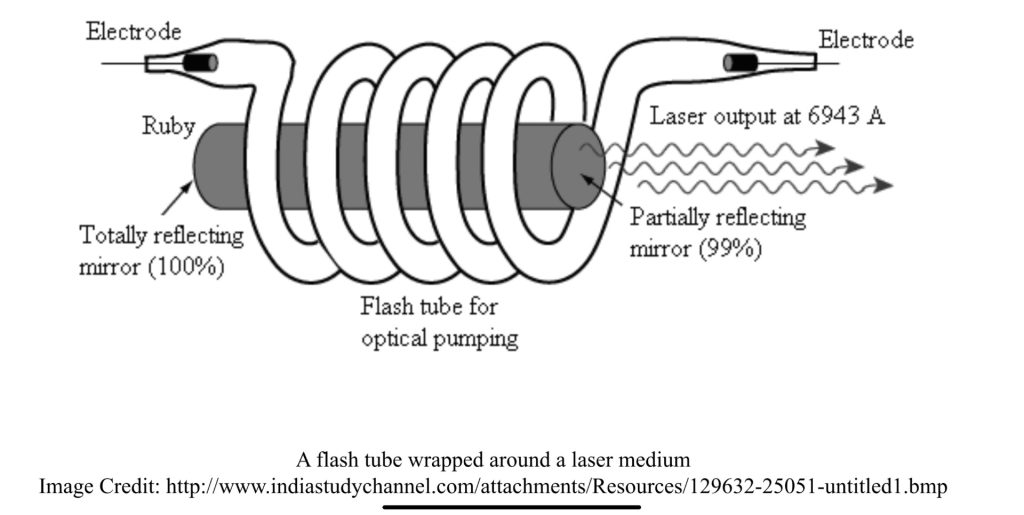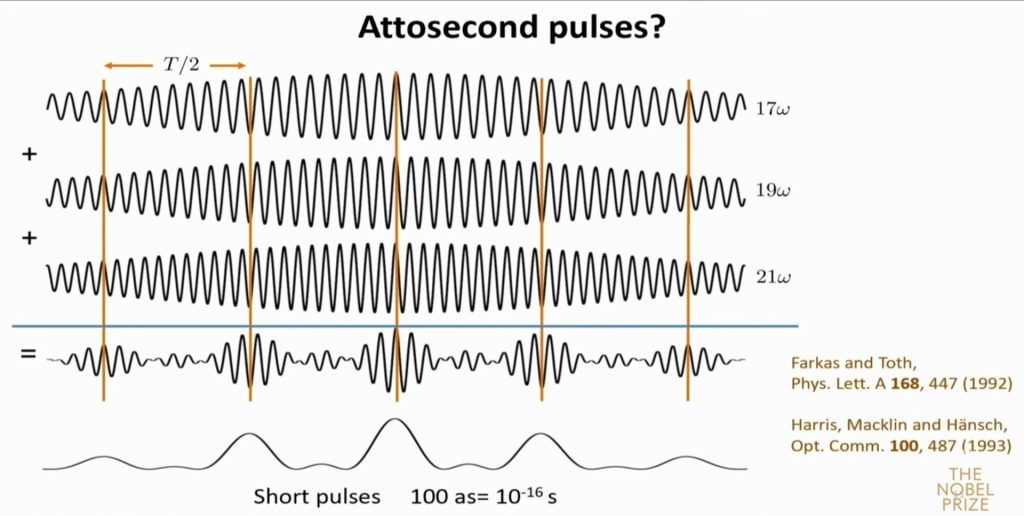This is a lecture on the Nobel Physics Prize in 2023, to be given at the Osher Lifelong Learning Institute at UC Irvine.
First we have to start with how a laser works. LASER stands for Light Amplification by Stimulated Emission of Radiation, a process theorized by Einstein starting in 1916.
Below, we have a diagram of an atom with an electron in an excited state of the atom. It will eventually decay to the ground state emitting a photon or electromagnetic wave of frequency f. However, if that electron is struck by a photon of the same frequency f emitted by a nearby atom, which already underwent the decay, it stimulates the decay and emission of the second photon, which is remarkably in phase with the initiating photon. This doubles the electromagnetic fields in the photon. The intensity of the photon beam is then the square of the electromagnetic field amplitude. This is illustrated in the diagram below, where the frequency is called omega and the energy is h-bar times omega.
In practice, the atoms are first excited by a flash to a short lived excited state, which then rapidly decays to a long lived metastable state, as illustrated below.
This diagram also shows the photons hitting further atoms in the metastable state, with each one adding to the amplitude of the wave and in phase.
To further increase the strength of the wave, it is reflected and passed back and forth through the laser tube full of flash tube primed atoms in the metastable state. The partial reflector at one ends lets out a continuous stream of laser light.
The microwave equivalent of the laser, or MASER, was built by Charles Townes and Arthur Schawlow in the 1950s. Townes’ student, Gordon Gould, sketched out the laser and invented the name. The first LASER was built by Theodore Maiman in 1960.
In order to probe electrons in atoms or molecules, we note that the speed of light is c = 3 angstroms per Attosecond, where an Attosecond is 10^(-18) seconds. A water molecule has a size of 3 angstroms, so you need electromagnetic radiation with that wavelength, L, which is in the extreme ultraviolet XUV or since f L = c, where f is cycles per Attosecond.
By serendipity, Anne L’Huillier (then at CEA Saclay in France) in 1987 shone a laser into Noble gases, and found photons up to the 21st harmonic in Xenon, the 29th in Krypton, and the 33rd in Argon. As in musical instruments, each harmonic doubles the frequency, and halves the wavelength or string length of a cycle. 2^33 = 8 x 2^30 = 8 x (2^10) ^3 = 8 x (1,024)^3 is of order 10^10. What is also remarkable is that the intensities or amplitudes showed a plateau in magnitude over a range.
The occurrence of harmonics was predicted in 1934 by a previous Nobel Laureate in Physics (1963), Maria Goeppert-Mayer. She was the second woman awarded, for the Nuclear Shell Model, which she shared with J. Hans D. Jensen and Eugene Wigner.
Now, the plot thickens. “It was well known, both mathematically and experimentally, that when many waves of equal amplitudes and equally spaced frequency are added together, the sum is a series of short pulses equally spaced in time.” (Physics Today, Dec. 2023, p. 14.). The pulses here would be hundreds of Attoseconds long and could be used to analyze electron behaviors. The key to the pulses was to use ionized electrons to respond together, as below.
There are then two routes to High Harmonic Generation of single pulses. First is to use a very short single laser pulse. Second, is to use circularly polarized light, which only returns the ionized electrons to the same return path when the circularly rotating polarization returns to the initial alignment.
Without going into further detail, Pierre Agostini (then at CEA Saclay) and Ferenc Krausz (then at the Technical University of Vienna) were able to show by different methods that the High Harmonic Generation methods were producing short pulses at 250 Attoseconds and 650 Attoseconds, respectively. Along with Anne L’Huillier they shared the 2023 Nobel Prize in Physics.
Application of Attosecond lasers are in atomic physics, the physical chemistry of small molecules, large-molecule chemistry, solid-state physics, and even biology. There is also history, which has shown that with new technology, it will have many new applications which are not even envisioned yet.
There are also X-ray Attosecond pulse generators coming from linear electron accelerators. Here is an example of the work being done at the Stanford Linear Accelerator Center 2 mile long electron accelerator by the Stanford Pulse Institute.
Here is a link to their other research areas: https://ultrafast.stanford.edu/research
Other recent laser advances are two crystal single wave pulses of 6 Terawatts of energy, with a possibility of pushing the pulse length down to zeptoseconds, or 10^(-21) seconds.







